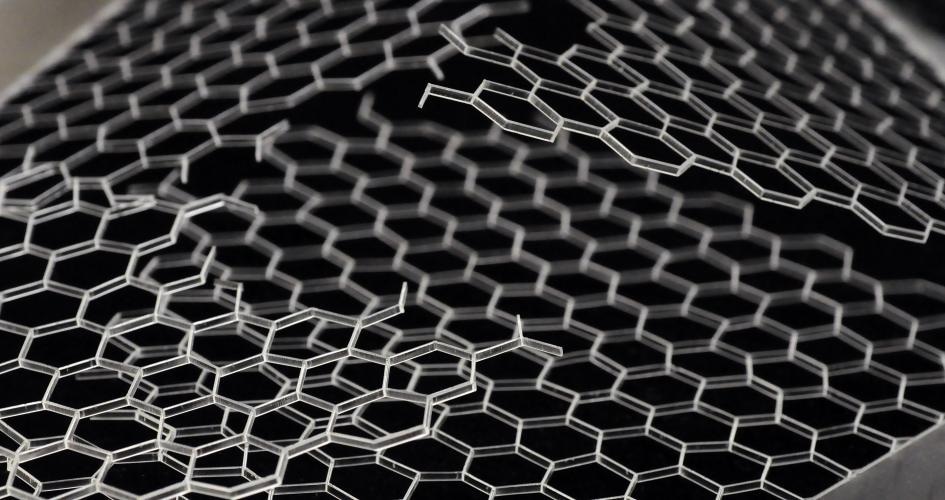Nov 7 2016
 A plastic honeycomb lattice that was pulled apart in an experiment studying how material rigidity affects the way things break. Courtesy of Prof. Sidney Nagel, et al.
A plastic honeycomb lattice that was pulled apart in an experiment studying how material rigidity affects the way things break. Courtesy of Prof. Sidney Nagel, et al.
A new study suggests that scientists can eventually help to develop materials that resist breaking, or crack in a predictable manner.
Scientists at the University of Chicago, New York University, and Leiden University used both artificial structures called metamaterials and a simulation, and they discovered that material failure can be constantly tuned through a number of changes in its underlying rigidity.
The Sept. 27 issue of Proceedings of the National Academy of Sciences published this research containing the results of experiments and computer simulations where researchers analyzed the effects of varying a material’s rigidity.
This research suggests that there is a new axis that can be explored and possibly exploited in determining how materials fail. It is only speculation at this point, but this work could allow for better ways of creating materials to withstand certain types of impact without catastrophic failure.
Sidney R. Nagel, Stein-Freiler Distinguished Service Professor in Physics, University of Chicago
The failure behavior of a solid dramatically changes as it approaches a particular level of rigidity. The research concluded that this leads to a break that is greatly different at low and high rigidities. Systematic analyzing and monitoring of this will enable scientists to improve their understanding of how materials break.
When a system is rigid - for example window glass - its bonds are firmly packed and break in narrow, clean, and relatively straight cracks. However, a floppy system with low rigidity has fewer bonds that initially tear at seemingly random places all over the material. Eventually, there are so many broken bonds that the tears connect in an irregular pattern, causing the material to break.
Researchers also found that increased flexibility of a material causes its failure zone to become wider, providing scientists with a clearer picture of what is happening. Instead of analyzing materials at a microscopic scale, researchers can make them less rigid, in essence blowing up the cracking region.
Reducing the rigidity of a material is, in a sense, like holding a magnifying glass that allows you to zoom in on the width of a crack, which is generally microscopic but can become as big as the sample size.
Vincenzo Vitelli, Physicist, Lorentz Institute at Leiden University
Scientists familiar with this work stated that the paper provides an in depth understanding of why materials fracture and also makes room for new study areas, including how failure and cracking can be monitored.
The researchers “link discoveries about different types of cracks—narrow, clean cracks versus widely spread cracks—into a unified picture that explains them as different limits: rigid materials, on one hand, versus low-rigidity materials on the other,” said Karin Dahmen, a professor of physics at the University of Illinois at Urbana-Champaign, who did not participate in the research. “This study will trigger many follow-up studies because it gives us control, as well as a powerful unified understanding of the spatial extent of cracks in many different materials.”
A systematic theory, hinted at here, could allow us to predict the damage around a crack, the stresses, the meandering and, most important, how all of these factors might vary as one changes how we make the material. Trial and error could be replaced by a beautiful, systematic approach.
James Sethna, Professor of Physics, Cornell University
Citation: “The role of rigidity in controlling material failure,” by Michelle M. Driscoll and Sidney R. Nagel at the University of Chicago and Bryan Gin-ge Chen, Thomas H. Beuman, Stephan Ulrich and Vincenzo Vitelli at the Lorentz Institute at Leiden University.
Funding for the research was provided by National Science Foundation, the Foundation for Fundamental Research on Matter and the Netherlands Organization for Scientific Research.